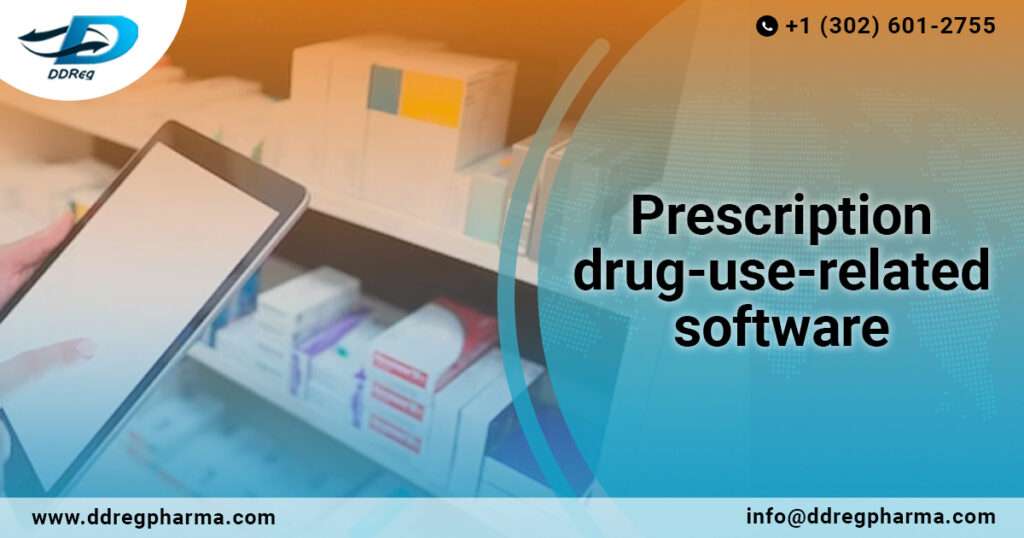Introduction
With the advancement in digital technology, the development of prescription drug use-related software has surged, offering innovative solutions to enhance patient care, monitor drug adherence, and improve healthcare outcomes. The U.S. Food and Drug Administration (FDA) recognized the need to address software outputs related to prescription drugs and combination products.
Prescription drug-use-related software is associated with a drug and can provide critical information to patients, caregivers, and healthcare professionals regarding the use of the drug. An example is a mobile app that acts as a digital diary in which patients record and review the use of their drug over time. Another example is a software that transmit data through a device-connected product- so, when a patient takes an emergency medication for a sudden asthma attack, a small hardware piece attached to the inhaler counts how many times the patient has used the device/mediation, and transmits the metric to their smartphone app. They can also share this information with their physician.
To provide clarity and consistency in this evolving landscape, the FDA released guidance on how it will exercise its authority over drug labelling for specific software outputs related to prescription drugs. This guidance focuses on software disseminated by or on behalf of drug sponsors and used by patients, caregivers, or healthcare practitioners.
Key Points of FDA Guidance
The FDA’s guidance on prescription drug use-related software labelling addresses several key points:
- Application of FDA’s Drug Labelling Authority: The guidance clarifies the FDA’s authority over software outputs related to prescription drugs, emphasizing its applicability to end-user output. This includes software that produces information related to a drug sponsor’s products.
- Labelling Descriptions in Prescribing Information (PI): The guidance specifies how FDA-required labelling, particularly in Prescribing Information (PI), should describe software when it is essential for safe drug use or relies on data from a combination product’s device component.
- Submission Requirements: Drug sponsors are provided with guidance on the submission requirements for end-user output related to prescription drug use-related software.
Distinguishing FDA-Required Labelling and Promotional Labelling
One crucial aspect of the guidance is distinguishing between FDA-required labelling and promotional labelling. FDA-required labelling includes information necessary for the safe and effective use of prescription drugs and software closely related to these products.
Promotional labelling, on the other hand, encompasses promotional materials that may not be necessary for safe use or may not have evidence of clinical benefit.
Submission of Promotional Labelling
The guidance also addresses the submission of promotional labelling and updates. Promotional end-user output data and updates must be submitted to the FDA at the time of dissemination. Sponsors have the opportunity to submit promotional communications to the FDA for comment before dissemination.
Software Review Process
The guidance acknowledges that some prescription drug use-related software functions may also qualify as medical devices under the Federal Food, Drug, and Cosmetic Act (FD&C Act). In such cases, the Center for Devices and Radiological Health (CDRH) reviews the device software functions, with input from the Center for Drug Evaluation and Research (CDER) or the Center for Biologics Evaluation and Research (CBER) regarding drug labeling-related issues. This eliminates the need for separate submissions, streamlining the regulatory process.
Prescribing Information (PI) and Software Functions
The guidance delves into the inclusion of information about prescription drug use-related software and its functions in the PI for medical products. This inclusion aims to assist healthcare practitioners in making informed decisions about prescribing drugs, taking into consideration the benefits and risks associated with the software.
Essential scientific information for safe and effective drug use, including details about device-connected software functions, must be provided in the PI. However, software functions that do not directly transfer data from a device to software should only be included if they are necessary for safe and effective drug use.
The placement and extent of information in the PI depend on the evidence provided by the sponsor. If clinical evidence supports the clinical benefits of the software, this information should generally be included in the ‘clinical studies’ section of the PI. Conversely, if there is no clinical evidence of a meaningful benefit associated with the software, the PI should only briefly describe the device-connected software functions that rely on data directly transferred from the device.
Conclusion
The FDA’s guidance on prescription drug use-related software labelling represents a significant step towards regulating software outputs in the realm of prescription drugs and combination products. By providing clear recommendations and distinctions between FDA-required and promotional labelling, this guidance aims to ensure patient safety, facilitate innovation, and harmonize regulations across all product centres. As the digital health continues to evolve, stakeholders, including pharmaceutical companies and digital health firms, can benefit from this guidance to navigate the regulatory framework effectively and deliver safe and effective software solutions to improve patient care.
References and Further Reading
- US FDA. Regulatory Considerations for Prescription Drug Use-Related Software. United States Food and Drug Administration. 2023
- US FDA. Software Associated with Prescription Drugs: Opportunities to Enhance Safe and Effective Medication Use. United States Food and Drug Administration. 2023

